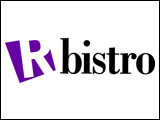Manitoba Water Stewardship advises testing has shown levels of Escherichia coli (E. coli) were within recreational water quality guidelines at most beaches monitored this week by the department.
Escherichia coli counts were above the guideline at Sandy Hook and Gull Harbour beaches on June 29 but quickly returned to within guidelines by July 2. Exceedance of the guideline of 200 E. coli/100 ml was likely caused by the extreme weather conditions experienced over the past weekend that caused winds and waves to wash bacteria out of the sand and into the bathing water.
On Lake Winnipeg, weather and lake level information appear to be good predictors of E. coli levels. Bacteria counts tend to increase when strong northerly winds cause water levels to temporarily increase and large waves wash bacteria out of beach sand. When calmer weather returns, E. coli bacteria levels typically fall quickly to below guideline levels.
Blue-green algae have not been reported from Manitoba beaches. The formation of algae blooms is difficult to predict. Warm and calm weather coupled with relatively high nutrient loads presents ideal conditions for their development. Algae blooms often appear in Manitoba lakes during July and can last until mid-September. Since algae blooms can reoccur during periods of warm and calm weather, bathers are reminded to avoid swimming in water where severe algae blooms are visible.
Results for all beaches across Manitoba are posted as they become available on Manitoba Water Stewardship’s website.
Each summer, Manitoba Water Stewardship routinely monitors about 60 beaches in Manitoba.



